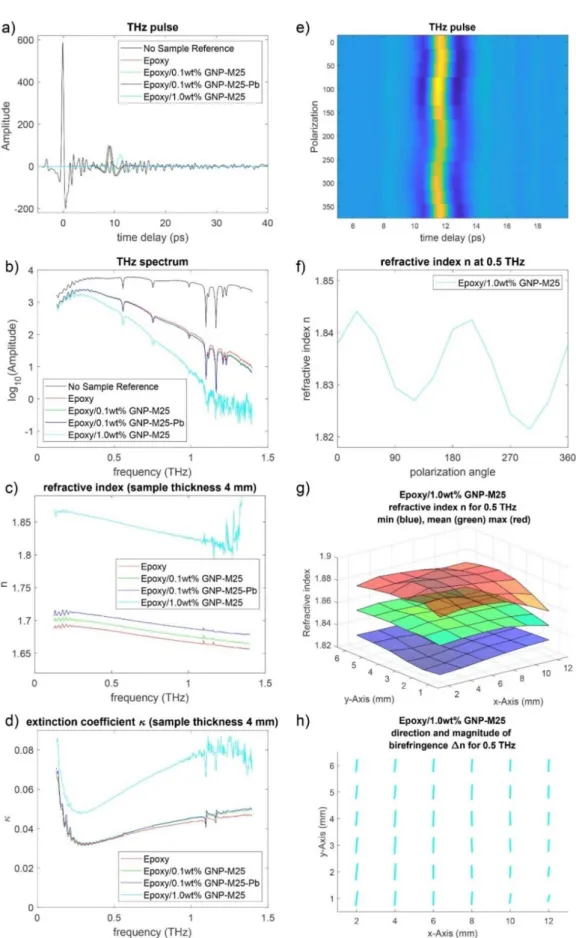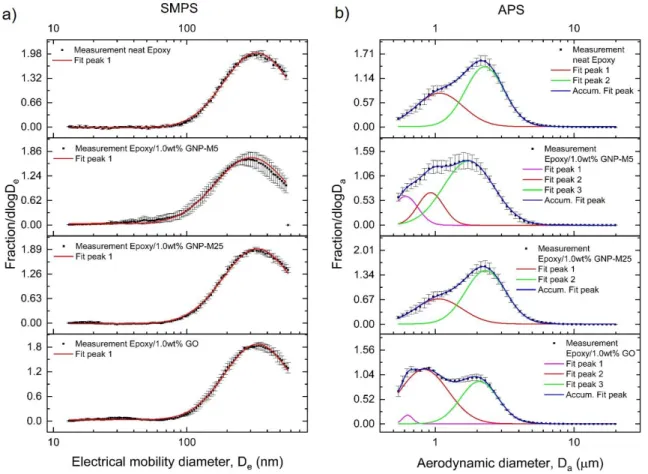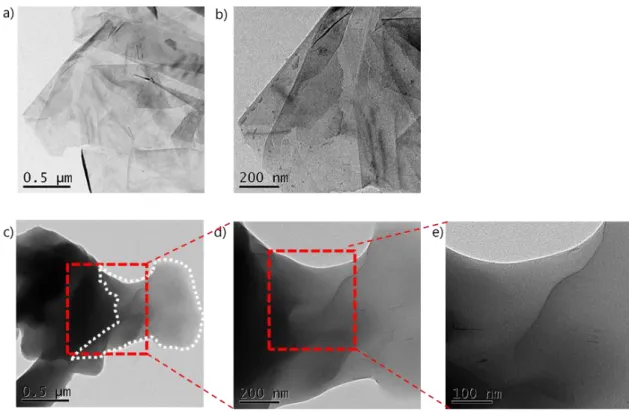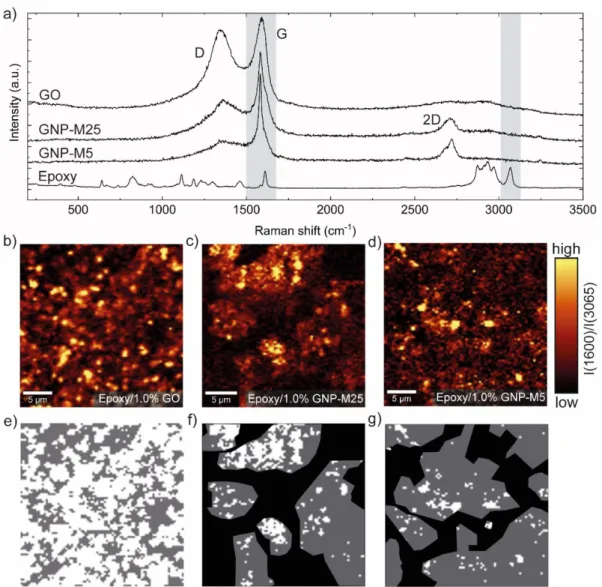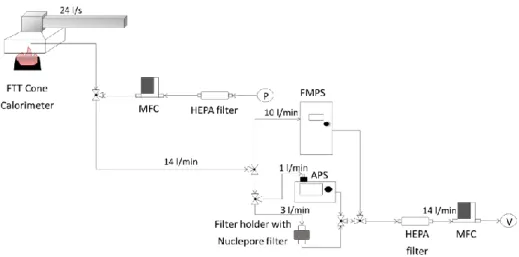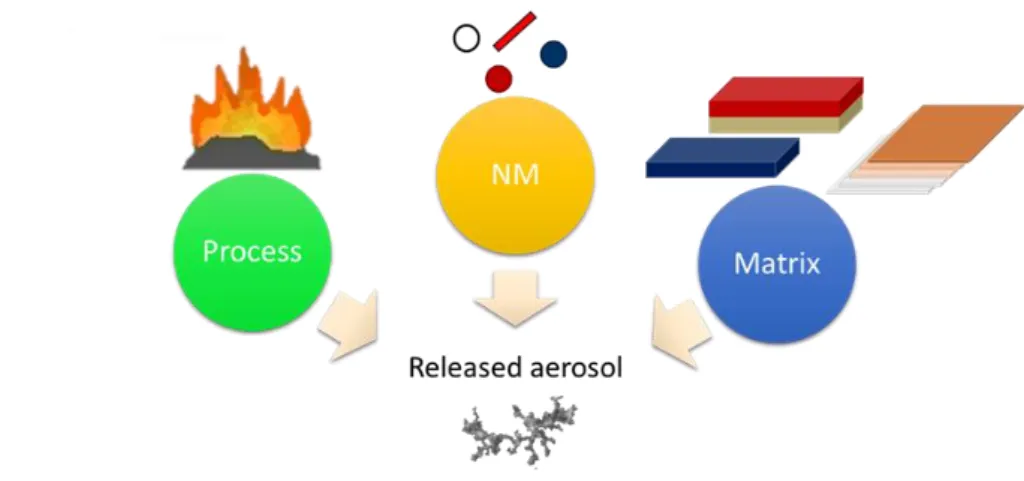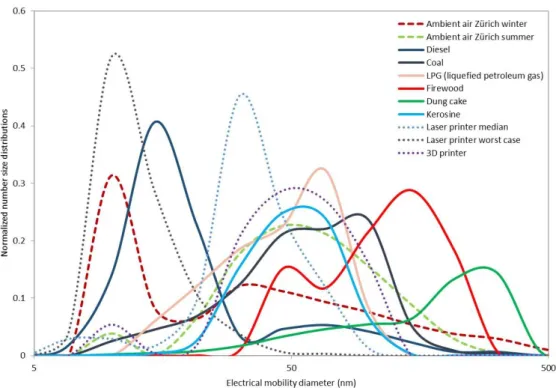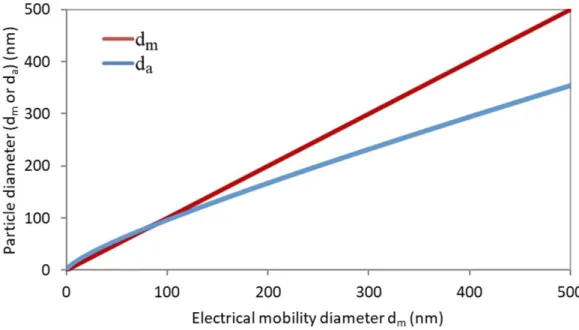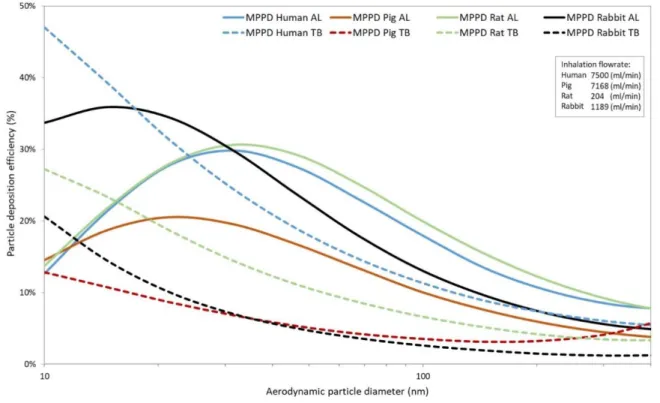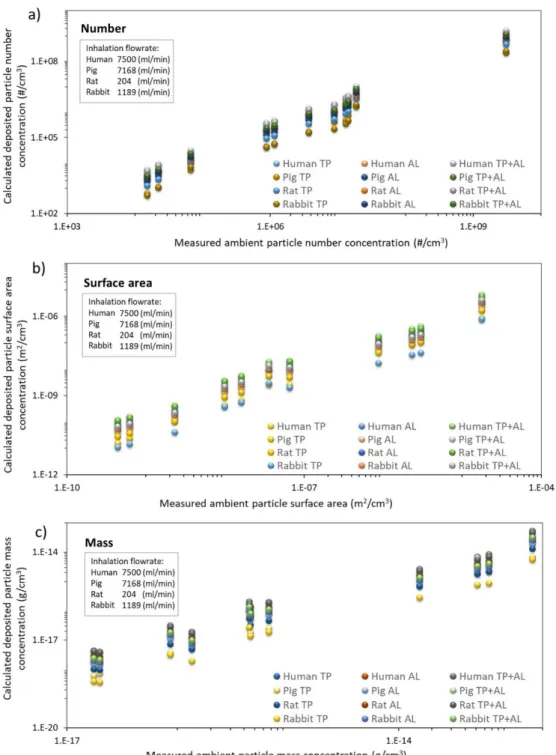Research Collection
Doctoral Thesis
Experimental release and exposure studies for quantitative and qualitative risk assessment of nanoforms
Author(s):
Hammer, Tobias Georg Publication Date:
2021
Permanent Link:
https://doi.org/10.3929/ethz-b-000474462
Rights / License:
In Copyright - Non-Commercial Use Permitted
This page was generated automatically upon download from the ETH Zurich Research Collection. For more information please consult the Terms of use.
ETH Library
DISS. ETH Nr. 27444
Experimental release and exposure studies for quantitative and qualitative
risk assessment of nanoforms
A thesis submitted to attain the degree of DOCTOR OF SCIENCES of ETH ZURICH
(Dr. Sc. ETH Zurich) presented by Tobias Hammer M.Sc., University Augsburg
born on 10.11.1991 German
accepted on the recommendation of Prof. Dr. Jing Wang
Dr. Peter Wick Prof. Dr. Bernd Nowack Prof. Dr. Gediminas Mainelis
2021
2
Table of Contents
Table of Contents ... 2
Abstract ... 3
Acknowledgement ... 9
1. Introduction and Motivation ... 10
1.1 Author`s contribution ... 16
2. Composites of epoxy and graphene-related materials: Nanostructure characterization and release quantification ... 18
2.1. Introduction ... 19
2.2. Experimental ... 22
2.3. Results ... 26
2.4. Discussion ... 35
2.5. Conclusion ... 38
3. Importance of the number emission factor of combustion-generated aerosols from nano-enabled products ... 40
3.1. Introduction ... 41
3.2. Materials and methods ... 44
3.3. Experimental results ... 47
3.4. Discussion ... 54
3.5. Conclusion ... 58
4. Relationship between aerosols exposure and lung deposition dose ... 60
4.1. Introduction ... 61
4.2. Materials and methods ... 64
4.3. Results and discussion ... 71
4.4. Conclusion ... 75
5. Determination of the delivered dose of nanoparticles in the tracheabronchial and alveolar regions of the lung ... 77
5.1. Introduction ... 78
5.2. Materials and methods ... 82
5.3. Results and discussion ... 88
5.4. Summary ... 94
6. Co-author papers and paper Ⅴ ... 95
7. Conclusion and Outlook ... 96
7.1. Conclusion ... 96
7.2. Outlook ... 98
8. References ... 99
9. Lists of Abbreviations, Symbols, Tables and Figures ... 107
10. Curriculum vitae ... 115
11. Appendix ... 118
3
Abstract
English
Humankind emits huge amounts of artificial and engineered nanoparticles into the environmental atmosphere. One contributing factor is the emission of ultrafine particles from combustion processes.
The second contributing factor is the release of aerosolized engineered nanoforms (NFs) from nano- enabled products (NEPs) that are used in daily life, such as cosmetics, sports products, cement or other construction materials and polymeric composites by processes such as abrasion, weathering or incineration. In the year 2010, the world health organization (WHO) classified the soot particles from combustion processes as carcinogenic. Similarly, pristine NFs and released aerosols from NEPs that contain NFs can induce adverse health effects. Size and chemical composition have been found to be determining factors for the toxicity of pristine NFs and aerosols containing NF fragments. Consequently, detailed knowledge of the morphology and chemical composition of the released particles is very important. A comprehensive risk assessment of released particles requires considering NF release and exposure through the entire life cycle of a NEP or a NF, starting from manufacturing, over use to end- of-life treatment, but also the accurate and complete characterization of a sufficient number of aerosols and NFs. An efficient risk assessment of multiple NFs and NEPs can be done via grouping and read- across of NFs or NEPs with similar hazard profiles; the approach of the European project GRACIOUS, to which this thesis contributed a small part by exploring the release and the exposure for various NFs and aerosols. There are data on the physico-chemical properties of generated aerosols and released NFs and the exposure to these particles, but they are in most cases not quantitative.
Consequently, this thesis aimed at a quantitative evaluation of aerosol release, the development of precise and fast approaches for the quantification of the released NFs in the generated aerosols and an accurate assessment of the inhalation exposure to aerosols in the nano size range. Important factors for the adverse effects of an aerosol were studied. The investigated factors were the concentration of generated aerosols, the released NF fraction (fraction of freestanding and protruding NFs in an aerosol), the morphology (shape and size) of the aerosol particles, the chemical composition of the aerosols, the lung deposited aerosol concentration, the lung deposited aerosol fraction, the influence of considered concentration metric (number, surface area or mass) on the lung deposition and the fact whether such a concentration metric (i.e. the lung deposited surface area) can be accurately determined.
Novel quantitative and qualitative data on aerosol and NF release and exposure were generated, which
facilitate together with literature data and novel results from other project partners the grouping and
read-across approach. Abrasion and combustion experiments were conducted to simulate aerosol and
NF release from NEPs during use and end-of-life treatment. In addition, lung deposition of combustion-
generated particles and multi-walled carbon nanotubes (MWCNTs) was simulated for exposure
evaluation and filtration of MWCNTs was assessed.
4 In chapter 2, abrasion-induced release of graphene-related materials (GRMs) from epoxy-composites was evaluated using qualitative (scanning electron microscopy coupled to an energy-dispersive X-ray, SEM-EDX), semi-quantitative (Raman) and quantitative (inductively coupled plasma-optical emission spectroscopy, ICP-OES) methods. The released GRM fraction was linked to the physical-chemical properties of the GRM, the interaction with the matrix material, the interlayer bonding strength in- between the GRM layers and the characteristics of the composite. 18 to 92 % of the embedded pristine GRMs were released depending on the size and the chemical composition of the GRM particles. Bigger size of the GRM and higher oxygen content on the GRM`s surface led to higher released GRM fractions.
Aerosol release from the combustion of polymeric composites with CuPhthalocyanine NFs, applied paint on wood and paper, with Fe
2O
3and/or silica SiO
2NFs was studied (chapter 3). The released aerosol concentration was evaluated via FMPS (fast mobility particle sizer) and APS (aerodynamic particle sizer) and aerosol number emission factors (n
efs) were calculated. The chemical composition of the aerosols was investigated via SEM-EDX. The concentrations of the Cu, Fe and Si signature elements of the embedded NFs in the aerosol were investigated via inductively coupled plasma-mass-spectrometry (ICP-MS). The generated aerosols showed modified size compared to the pristine NFs and gained their chemical composition mainly from the matrix and only to a minor fraction from the pristine NF. Since the n
efsin the FMPS size range were specific for each type of NEP, we conclude that NEPs could be categorized according to their potential to release aerosols when they are burnt.
Exposure to aerosols from the most widely spread combustion processes and in ambient air was studied via calculating their lung deposition by using the Multiple Path Particle Dosimetry (MPPD) model. The relationship between the deposited particle fraction and size distribution was established in chapter 4.
The results revealed that the lung deposition fraction depended on the diameter of the mode of a aerosol
size distribution. It was higher for human beings than for animals. The lung deposition fractions that
were calculated based on number were slightly higher than those that were calculated based on surface
area or mass. Nevertheless, the dependence on the considered metric (number, surface area or mass)
was not strong. Inhalation exposure of single standing airborne multi-walled carbon nanotubes
(MWCNTs) and CNT agglomerates was evaluated, by assessing their filtration and deposition in the
deep lung using calculation models (appendix, section A4.). Previous models were revised and models
for realistic CNT mixtures in the air were developed using mixing states of CNT agglomerates and
single standing CNTs. The results revealed that filtration, inhalation and deposition were influenced by
the agglomeration of the CNTs. The calculated lung deposition for the realistic CNT mixtures and CNT
agglomerates showed much higher deposition rates than that for single standing CNTs under a variety
of flow conditions.
5 In chapter 5, the effective particle dose in the lung was calculated based on the lung deposited surface area (LDSA), which was determined by combining the lung deposition curves of the MPPD model and the geometric surface area of the particles. It was verified if the application range of nanoparticle surface area monitor (NSAM), which was developed based on the ICRP-model, could be extended to the MPPD model. Deposited concentrations in the alveolar and trachea-bronchial regions were calculated and model-specific calibration factors on the LDSA were developed. It turned out that despite small errors the application range of NSAM could be extended to other lung deposition models.
The generated data serve to enhance the understanding of release and exposure mechanisms, explain
the influences of the most important factors for the adverse effects of the generated aerosols with NF
contents and allow the assessment of the effects of these aerosols on environmental health and safety
(EHS). The generated quantification data support the hypotheses for grouping and read-across of NFs
of the European GRACIOUS project and were added to the release library of the GRACIOUS project.
6 Deutsch
Zusammenfassung
Die vom Menschen in die Atmosphäre emittierte Menge an künstlichen Nanopartikeln (NP) / Nanoformen (NF) ist gigantisch. Zurückzuführen ist dies ist auf zwei Faktoren. Erstens auf die Emission von NP / NF enthaltende Aerosole aus Verbrennungsprozessen und zweitens auf die Freisetzung von NP / NF enthaltende Aerosole die durch Abrieb, Verwitterung oder Verbrennung von sog.
nanoermöglichten Produkten (NEP) wie Kosmetika, Beton, Sportprodukten oder Bau- und Kompositmaterialien entstehen. Im Jahr 2010 hat die WHO (Weltgesundheitsorganisation) Rußpartikel aus Verbrennungsprozessen als krebserregend eingestuft. Gleichermaßen können sich auch freigesetzte Nanoaerosole von NEP negativ auf die menschliche Gesundheit und die Umwelt auswirken. Dabei sind Größe und chemische Zusammensetzung der NP entscheidende Faktoren für deren Toxizität und detailliertes Wissen über diese Eigenschaften hilft das Risiko besser einzuschätzen. Für eine umfassende Risikobewertung müssen im besten Fall Nanopartikelfreisetzung und die Exposition zu den freigesetzten NP während des gesamten Lebenszyklusses beginnend bei der Produktion, über den Gebrauch bis hin zur Verbrennung der NP / NF bzw. der NEP an deren Lebensende berücksichtigt werden.
Es gibt bereits etliche Forschungen und Daten über die physikalisch chemischen Eigenschaften von freigesetzten Aerosolen und NP sowie die Exposition zu freigesetzten NP. In den meisten Fällen sind die Daten jedoch nicht quantitativ und für eine umfassende Risikobewertung der großen Diversität an freigesetzten NP reicht die verfügbare Menge an Daten noch nicht aus. Für diese bedarf es einer quantitativen Charakterisierung für eine ausreichende Zahl an NP. Eine effiziente Risikobewertung der großen Menge an freigesetzten NP bzw. der NEP kann zum Beispiel durch Gruppierung der NP / NEP anhand ihres Gefahrenpotentials und anschließendes Querlesen geschehen. Dies ist die Herangehensweise des Europäischen Forschungsprojekts GRACIOUS.
Als Teil dieses Projektes zielte diese Studie auf eine quantitative Bewertung von
Nanopartikelfreisetzung sowie die Entwicklung von genauen und schnellen Methoden für die
Quantifizierung der freigesetzten NP und einer genauen Bewertung der Exposition von Nanoaerosolen
ab. Entscheidende Faktoren für die negative Auswirkungen der Aerosole wie z. B. die Konzentration an
erzeugten Aerosolen, Form und Größe der Aerosolpartikel, ihre chemische Zusammensetzung, der
Anteil an zuvor eingebetteten NP in den erzeugten Aerosolen, die lungenabgelagerte Konzentration an
Aerosolpartikeln, der Lungenabgelagerte Anteil relativ zur gesamten Aerosolkonzentration, sowie der
Einfluss des berücksichtigten Maßes (Partikelanzahl- Oberfläche oder Masse) für die Lungenablagerung
und die Tatsache, ob dieses Maß genau gemessen werden kann, wurden hinsichtlich einer ganzheitlichen
Bewertung der negativen Effekte von eingeatmeten Nanoaerosolen erforscht.
7 Neue quantitative und qualitative Resultate über die Freisetzung von Aerosolen und NP und die Exposition zu Nanoaerosolen und NP wurden erzeugt. Zusammen mit Literaturdaten und neuen Ergebnissen anderer Projektpartner erleichtern diese die Gruppierung der NP / NEP. Abrieb- und Verbrennungsexperimente wurden durchgeführt, um die Freisetzung von NP durch Gebrauch und die Verbrennung von NEP zu simulieren. Zudem wurde die Ablagerung von Nanoaerosolen und ultrafeinen Partikeln aus Verbrennungsprozessen in der Lunge simuliert und die Filtration und die Lungenablagerung von mehrwandigen Kohlenstoffnanoröhren bestimmt.
Mittels qualitativer (energiedispersive Röntgenanalyse), semiquantitativer (RAMAN Spektroskopie) und quantitativer (induktiv gekoppelte Plasma-Emissionsspektrometrie) Methoden wurde der durch Abrieb freigesetzte Anteil an graphenähnlichem Material (GRM) bestimmt (Kapitel 2). Der Anteil an freigesetzten GRM relativ zu den im Gesamten freigesetzten Partikeln wurde zu den physikalisch chemischen Eigenschaften der GRM sowie der Bindungsstärke der GRM zur Matrix und der Bindungsstärke zwischen den Einzellagen der GRM und zu den Eigenschaften der Komposite in Beziehung gesetzt. 18 bis 92 % der eingebetteten GRM wurde je nach Größe und chemischer Zusammensetzung der GRM freigesetzt. Größere GRM und GRM mit höherem Sauerstoffgehalt auf der Oberfläche wurden vermehrt freigesetzt.
Die Freisetzung von Aerosolen / NP durch die Verbrennung verschiedener NEP wie zum Beispiel polymerischen Kompositen mit CuPhthalozyaninnanopartikeln, mit Farbe bestrichenen Holzbrettern und Papieren, die Eisenoxid (Rost) und /oder Silikat NP enthielten, wurde in Kapitel 3 untersucht. Der Einfluss von Matrix und eingebetteten NP auf die freigesetzten Aerosole wurde untersucht.
Aerosolkonzentrationen wurden mittels FMPS (fast mobility particles sizer) und APS (aerodynamic particle sizer) gemessen und Aerosolemissionsfaktoren (n
efs, number emission factors) wurden berechnet. Die chemische Zusammensetzung und die Konzentrationen der Cu-, Fe-, und Si- Signaturelemente der Aerosole wurde mittels energiedispersiver Röntgenanalyse beziehungsweise mittels induktiv gekoppelter Plasma-Massenspektrometrie bestimmt. Die physikalisch chemische Charakterisierung der Flugasche hat hauptsächlich Aerosolpartikel mit einer modifizierten chemischen Zusammensetzung und transformierter Größe im Vergleich zu den originalen NP gezeigt. Die chemische Zusammensetzung wurde hauptsächlich durch die Matrix des Komposites und nur zu einem kleinen Teil durch die eingebetteten NP definiert. Nachdem die Emissionsfaktoren der Aerosolpartikel, die mittels FMPS gemessen wurden, typisch für bestimmte NEP waren, legte dies die Schlussfolgerung nahe, dass die NEP entsprechend ihres Potenzials Aerosole während der Verbrennung zu emittieren, klassifiziert werden können. Die erzeugten Daten erleichtern eine umfassende Gefahrenanalyse von Nanoaerosolen aus Verbrennungsprozessen (von NEP) mit ähnlichem Gefahrenpotenzial.
Zudem wurde die Exposition zu Aerosolen aus Verbrennungsprozessen untersucht (Kapitel 4). Mittels
MPPD (Multiple Path Particle Dosimetry) Modell wurde die Ablagerung von Aerosolen aus der
8 Umgebungsluft und häufig durchgeführter Verbrennungsprozesse in der Lunge berechnet. Der Anteil der abgelagerten Partikel wurde in Beziehung zu der Größenverteilung der berücksichtigten Aerosole gesetzt. Der Anteil der abgelagerten Partikel erlaubt Rückschlüsse auf die effektive Partikeldosis in der Lunge. Zudem wurde erforscht, in wie weit der abgelagerte Aerosolanteil in der Lunge vom berücksichtigten Maß (Anzahl, Oberfläche oder Masse) abhängt. Wie die Ergebnisse gezeigt haben, hängt der Anteil an abgelagerten Nanoaerosolen von der am häufigsten auftretenden Größe der Aerosolgrößenverteilung ab. Für den Menschen war der Anteil an abgelagerten Partikeln in der Lunge höher als für vergleichbare Tiere. Eine starke Abhängigkeit von dem berücksichtigten Maß wurde dagegen nicht gefunden.
Exposition zu lungengängigen einzelnen mehrwandigen Kohlenstoffnanoröhren (MWCNTs) und CNT- Agglomeraten wurde dadurch bewertet, indem Ergebnisse aus Filtrierungs- und Lungenablagerungsversuchen und Berechnungen mittels verschiedener Modelle verglichen wurden (Appendix A4.). Existente Modelle wurden überarbeitet und neue Modelle für realistische Mischungen aus Einzel-CNTs und CNT-Agglomeraten entwickelt. Die Ergebnisse zeigten, dass der Grad der Agglomeration der CNT deren Filtrierung, Inhalationspotential und Lungenablagerung beeinflusst. Die errechneten Lungenablagerungsraten von CNT-Agglomeraten und realistischen Einzel-CNT-CNT- Agglomeratmischungen waren deutlich höher als die entsprechenden Ablagerungsraten von einzelnen CNT und dies für unterschiedliche Strömungsverhältnisse (Menge und Geschwindigkeit der eingeatmeten Luft). Dies impliziert dadurch unterschiedliche Einflüsse auf die menschliche Gesundheit.
Die effektive Partikeldosis in der Lunge wurde anhand der lungenabgelagerten Oberfläche (LDSA) berechnet indem Lungenablagerungskurven mit der geometrischen Partikeloberfläche kombiniert wurden (Kapitel 5). Im Zuge der Studie wurde verifiziert, ob das Nanopartikel Oberflächen Monitor (NSAM) Gerät, das basierend auf dem ICRP (International Commission on Radiological Protection) Modell entwickelt wurde, auf das MPPD Modell ausgeweitet werden kann. Partikelablagerungen in den Alveolen und dem Trachea Bronchus wurden berechnet und modell-spezifische Korrekturfaktoren entwickelt. Die Ergebnisse zeigten, dass sich das Anwendungsgebiet des NSAMs auf das MPPD Modell ausweiten lässt und dass dabei nur kleine Abweichungen auftreten.
Die Daten aus den Experimenten und Berechnungen helfen Aerosol- und NP-Freisetzung- und
Exposition genauer zu verstehen und damit die Effekte auf Umwelt, Gesundheit und Sicherheit besser
einzuschätzen. Die erzeugten Daten unterstützen die Hypothesen für die NP / NF / NEP Gruppierung
des europäischen GRACIOUS Projekts und wurden der Datenbibliothek des GRACIOUS Projekts
beigefügt.
9
Acknowledgement
Firstly, I would like to thank my doctoral supervisor Prof. Dr. Jing Wang for his admirable and valuable guidance. I appreciate the tremendous amount of advice and encouragement that he gave me in hundreds of discussions and conversations. Thank you also for recommending such beautiful operas. I enjoyed chatting with you about the stories of the operas, as well as the different characters in the operas and the music.
I thank my PhD committee members Dr. Peter Wick, Prof. Dr. Bernd Nowack and Prof. Dr. Gediminas Mainelis for all the fruitful discussions and their support of my scientific work. I thank Prof. Dr. Peter Molnar for chairing my PhD defense.
I thank all my co-authors of the papers for their contributions and for their excellent scientific work, their help in the paper writing and the discussions during the publishing process.
I would like to thank Prof. Heinz Fissan for his discussions on the deposition of poorly soluble particles (PSPs) in the lung and the evaluation of the lung deposited surface area (LDSA). I thank Peter Zolliker for his guidance and assistance in the terahertz measurements and Oliver Braun for his help in Raman spectroscopy mapping. I thank Panagiota Sachinidou for doing filtration simulations and experiments and for being a friend. I thank Xu He and Yeon Kyoung Bahk for their guidance and discussions regarding the lung-deposition and filtration of CNTs and Zhengyuan Pan for his graphical work.
I want to thank Fuze Jiang for such excellent SEM-images and being a person with such a bright personality. It was fun to work with him. I thank Adrian Wichser and Ken Lehner for their ICP-MS, ICP-OES analyses and Renato Figi and Claudia Schreiner for their ICP-OES and wavelength dispersive X-ray fluorescence (WD-XRF) analyses. Furthermore, I would like to thank my other Empa colleagues Norbert Heeb, Markus Zennegg, Andreas Borgschulte, Davide Bleiner, Sarka Drdova, Woranan Netkueakul and Hanchao Gao for the chats and discussions on analyses approaches and the results and their guidance and for being friends.
I thank all the people from the European GRACIOUS project. A special thank goes to Vicky Stone the
coordinator of the GRACIOUS project and to the members of working package two, Camilla Delpivo,
Nathan Bossa, Sorroco Vázquez-Campos, Michael Persson, Emmanuel Ruggiero, Aracelli Sánchez-
Jiménez, Vernonique Adam, Ana Sofia Fonseca, Bernd Nowack and Wendel Wohlleben for all the
discussions in the frequent teleconferences, emails or the face-to-face meetings. I enjoyed especially the
consortium meetings in Barcelona, Ispra, and Amsterdam. It was a great time being a part of the
GRACIOUS project.
10
1. Introduction and Motivation
Manmade emission of artificial and engineered nanosized particles into the atmosphere is due to several reasons very high (Kuhlbusch et al. 2010; Brar et al. 2010; Surendhiran et al. 2020; Oberdörster et al.
2005; Kittelson et al. 2004; Bello et al. 2013; Nowack et al. 2007). One reason is the emission of ultrafine particles (UFP, smaller than 100 nm) from various combustion processes such as the combustion of fossil fuel for transportation purposes in automobiles, ships or airplanes and the combustion of firewood, coal or other heating products. Multiple studies (Keskinen and Rönkkö 2010; Mathis et al. 2004; Tiwari et al. 2014; Kittelson et al. 2004, etc.) showed that all these processes lead to emission of aerosols and nanoforms (NFs) into the ambient air but also other environmental compartments such as soil or water.
Emissions of nanoparticles (NPs)/ NFs, and UFPs were studied in the past (Chen et al. 2016; Khan et al. 2010; Lee et al. 2007; Li et al. 2019; Kittelson et al. 2004, etc.). Recently the research focuses particularly on the investigation of anthropogenically-generated nanosized and ultrafine aerosols and the potential adverse health effects. Health risks caused by UFPs in the air were studied by e.g. Chen et al. 2016, Donaldson and MacNee 2001, Guo et al. 2018, Khan et al. 2018, Kumar et al. 2014, Landsiedel et al. 2014, Lee et al. 2007, Schraufnagel et al. 2019 or Hankin 2014. Based on this literature data, emission from the combustion processes are mainly soot particles. In the year 2010, the world health organization (WHO) classified the soot particles from combustion processes as carcinogenic (WHO 2010). Since combustion processes take place in residential and industrial areas, a high number of people might be exposed to the emitted soot particles.
The second contributing factor for the high emission of NFs into the ambient air is the release of engineered NFs from daily life products such as cosmetics, sports products, paints or polymeric composites by processes such as abrasion, leaching, weathering, or combustion. Another name for this kind of products is nano-enabled products (NEPs) since such materials profit from the extraordinary properties of the pristine NFs such as their mechanical strength (Potts et al. 2011; Wang et al. 2017;
Anwar et al. 2016; Mahrholz et al. 2009; Sow et al. 2011), electrical and thermal conductivity (Chandrasekaran et al. 2013) or color (Kotnarowska et al. 2014). For example, the mechanical strength of conventional polymers can be enhanced by adding nanoparticles/ NFs (Breuer and Sundararaj 2004;
Gonçalves et al. 2018; Le et al. 2014; Nowack and Bucheli 2007; Potts et al. 2011). Similarly, also other types of NEPs such as paint, paper or concrete take advantage of the extraordinary physicochemical properties of the pristine NFs. Therefore, the NFs are produced in high amounts. There are thousands of different pristine NFs and NEPs (Breuer and Sundararaj 2004; Gonçalves et al. 2018; Le et al. 2014;
Nowack and Bucheli 2007; Potts et al. 2011).
Notwithstanding, apart from their benefits, pristine NFs and released aerosols with NF contents from
NEP may also induce adverse effects. Fiber-like behavior of high aspect ratio nanoforms (HARN)
11 materials or the fact that some NFs contain toxic elements (e.g. copper…), or the uptake of poorly soluble particles (PSP) through different exposure routes (inhalation, dermal or oral contact) could lead to adverse (eco)toxic or health risks (Basinas et al. 2018; Bello et al. 2009; Cooper 2017; Kuempel et al. 2012; Kuhlbusch et al 2011; Mueller et al. 2008; Seipenbusch 2014). In most cases, the released particles possess different physicochemical properties (shape, size, chemical composition) as the pristine NFs. This has to be taken into consideration in the assessment of their potential adverse (eco)toxic effects on the environment or human health.
Release of aerosols with NFs can occur in each life-cycle stage of a NEP such as the production, use (abrasion, drilling, cutting, etc.), aging (e.g. weathering) or end-of-life treatment (incineration) and workers or consumers could be adversely affected. As reported by Wang et al. 2017 and Chivas-Joly et al. 2019, NFs might be transformed by the different release processes. Following the source-to-adverse- outcome pathway (SAOP) approach described by Oomen et al. 2015 and Landsiedel 2016, every transformation or modification of a NF needs to be taken into consideration for the safety, risk, or toxicity assessment since transformation affects type and shape of the released particle and thereby its toxicity and its biological impact.
The number of anthropogenic NFs and NEPs is continuously increasing (Breuer and Sundararaj 2004;
Nowack and Bucheli 2007; Potts et al. 2011; Limited 2011; Le et al. 2014; Singh et al. 2016a; Singh et al. 2017; Gonçalves et al. 2018; Singh et al. 2019) and the global nanotechnology revenue was estimated to be higher than US $125 billion by the year 2024 (Markets and Markets Research 2014; Lux Research 2014). The increasing amounts of pristine and released NFs and aerosols with NF content, foster manmade emission of artificial anthropogenic NFs into the ambient and directly affect the ecosystem and indirectly human health (Schmid and Cassee 2017; Manigrasso et al. 2018; Hammer et al. 2019;
Avino et al 2016; Froggett et al. 2014; Seipenbusch et al. 2014; Nowack and Bucheli 2007; Nowack et al. 2012; Ruggiero 2019; Wang et al. 2017; Kuhlbusch et al. 2010; Brar et al. 2010; Surendhiran et al.
2020; Oberdörster et al. 2005; Kittelson et al. 2004; Bello et al. 2013; Nowack et al. 2007; Roes et al.
2012). Human beings can be directly exposed to pristine, released, combustion generated nanoaerosols with NFs via inhalation, dermal or oral contact, or indirectly via uptake of the NFs that were earlier released into the environment (ambient air, surface water, wastewater, soil etc.).
Accurate and predictable assessment of the adverse effects of the released NFs requires a quantitative
investigation of the released NFs and an evaluation on how the aerosol concentration and the NF fraction
relate to exposure. Quantitative data on release and exposure are of particular interest for the society and
environmental safety. For an effective risk assessment, it is important to know whether there is NF
release during a specific activity/ process. In the best case, the released NF fraction/ concentration could
be related to the effective exposure. The type of released NF (e.g. pristine, matrix-embedded/ associated
or transformed NF), its shape and chemical composition, the released NF concentration and the NF
12 fraction in the released aerosol finally define the toxicity of aerosol. If there is no release of NFs during an activity/process/ (mechanical treatment, weathering, incineration, etc.), exposure to such a NF will be unlikely. Therefore, there is no risk to be adversely affected by the NF. In case of exposure to NFs, the risk to be affected by the NF can be described as the potential hazard of a NF (e.g. related to toxicity, size) multiplied by the exposure duration to the respective NF.
The exposure probability to the NFs depends on the exposure pathway. For pristine and released NFs, the main exposure pathways are via the inhalation route, the dermal route and the oral exposure route (Thomas et al. 2006; Onoue et al. 2014). Depending on the exposure route and the exposure time, exposure to the same NF can result in very different health effects. Among the exposure routes, inhalation is the most critical exposure pathway for humans or animals. The inhaled particles might deposit in the trachea-bronchial or alveolar regions of the lung. The smaller the particles, the deeper they can get into the respiratory system (Bakand et al. 2012). In the worst case, deposited particles in the alveoli could even penetrate into the blood (Rothen-Rutishauser et al. 2006), since there is no mucus layer covering the epithelial tissue of the alveoli, which could trap the NFs (Cone 2009). Once in the bloodstream, these particles can be circulated in the whole body and might be transferred to vital organs such as brain or heart, where an agglomeration of the NFs can lead to severe diseases as e.g. apoplexy or heart attacks (Rothen-Rutishauser et al. 2006; Pope, et al. 1995; Schulz et al. 2005).
For a comprehensive environmental, health, safety and risk assessment, both aerosol/ NF release and exposure need to be considered. Combining the exposure probability to released aerosols with the intrinsic toxicity of a NF that is directly related to its size, shape or chemical composition could be beneficial (Oomen et al. 2015; Landsiedel et al. 2016). In recent years, the morphology and the chemical composition of several pristine engineered and incidental NFs (aerosols with NF contents) and their toxicological effects were studied (Hund-Rinke et al. 2018; Fransman et al. 2016; Kingston et al. 2014;
Golanski et al. 2012; Schlagenhauf et al. 2012 and 2015a, Netkueakul et al. 2020; Rothen-Rutishauser et al. 2006; Pope, et al. 1995; Schulz et al. 2005 etc.).
However, the available data is in many cases not quantitative and not sufficient for a comprehensive evaluation of environmental health and safety for the existing variety of released aerosols and NFs. The amount of existing data on pristine NFs/ engineered nanoparticles (ENPs) and released aerosols with NF contents and the corresponding exposure requires an intelligent testing strategy. As described by Mech et al. (2019) grouping and read-across is a powerful tool in order to do a risk assessment for NF release and exposure from NEPs while it allows to perceive the overview over the tremendous number and variety of NEPs and ENPs/NFs.
Consequently, the European project GRACIOUS used this approach to enable feasible risk assessment
for pristine and released NFs from NEPs. Accurate and efficient assessment of environmental health
13 and safety (EHS) for NFs needs to be based on quantitative data for NF release and exposure. This requires the quantitative determination of released NF fraction/ concentration for a sufficient number of NFs and NEPs and the complete characterization of the physicochemical properties of the NFs and in case of an exposure assessment, the determination of the delivered dose. Ideally, the procedures to determine the released NF fraction or the delivered dose should be fast and accurate.
Contributing to the GRACIOUS project, this study provides support to the hypothesis that multiple factors have to be taken into account for an accurate and comprehensive assessment of the potential adverse effects of aerosols with NF contents. Four studies were conducted to verify the hypotheses showing that multiple different factors such as the concentration of generated aerosols, the released NF fraction (fraction of embedded NFs in an aerosols), the size and the shape of the aerosol particles, the chemical composition of the aerosols, the lung deposited aerosol concentration, the lung deposited aerosol fraction, the influence of the considered concentration metric (number, surface area or mass) for the lung deposition and the fact whether such a concentration metric can be accurately determined, have to be taken into consideration towards an accurate assessment of the adverse effects of inhaled aerosols in the nano size range. Each of the studies focused on different factors.
The first study (Chapter 2) simulated aerosol release from NEPs during use and focused on the accurate determination of the released NF fraction and the morphology of generated aerosol particles which are both important factors for the adverse effects of an aerosol. The released GRM fraction in aerosolized abraded particles from graphene-related material (GRM)-epoxy composites (an example composite type) was determined, since the free-standing or protruding part of GRMs on the surface of the abraded particles was considered to be decisive for the adverse effects of the generated abraded particles. The focus was put primarily on fast and quantitative approaches to assess the released GRM fraction and a comprehensive investigation of the physicochemical characteristics of the abraded particles such as shape and size. Novel quantitative and qualitative data on NF release were generated, which facilitates together with literature data and novel results from other project partners the grouping and read-across approach.
In the second study (Chapter 3) combustion experiments were performed using different NEPs such as thermoplastic polyurethane (TPU), polyamide 6 (PA6) and polylactic acid (PLA) with CuPhthalocyanine NFs, paper with Fe
2O
3and SiO
2NFs and applied paints on wood panels with Fe
2O
3and SiO
2NFs to simulate aerosol and NF release during an end-of-life treatment using the conditions of
accidental combustion. The goal of this study was specifically the investigation of the released aerosol
number concentration and also the chemical composition of the generated aerosols, which are additional
decisive factors for the potential adverse effects of generated aerosols. The higher the aerosol number
emission factor, that is directly related to the released aerosol concentration, the stronger are also the
expected adverse effects, when such aerosols are inhaled into the respiratory system.
14 In these two studies multiple instruments were used to evaluate the aforementioned factors. Scanning mobility particle sizer (SMPS) and aerodynamic particle sizer (APS) were used to determine the size and the concentration of released aerosols during abrasion. Fast mobility particle sizer (FMPS) and APS were used for analyses of the combustion-generated NFs (aerosols). Aerosol number emission factors (n
efs) were calculated to assess the potential of the NEPs to release aerosols during combustion. The morphology of all released aerosols was investigated via scanning electron microscopy (SEM). To determine the released NF fraction, the generated particles were investigated by means of quantitative methods (inductively-coupled plasma mass spectroscopy (ICP-MS) and inductively-coupled plasma optical emission spectroscopy (ICP-OES)), semi-quantitative (Raman spectroscopy) and qualitative methods (scanning electron microscopy coupled to an energy dispersive X-ray (SEM-EDX) and wavelength dispersive X-Ray fluorescence (WD-XRF)). Quantitative methods are often very slow, and fast (qualitative) methods often lack in accuracy but are sufficient to determine if there was release of NFs. Semi-quantitative methods such as Raman spectroscopy could be a potential compromise that is fast and delivers quantifiable data.
Secondly, exposure to generated nanoaerosols was studied. In the ideal case, the release could be related to the exposure. At least important factors such as aerosol concentrations or aerosol size distributions should be known quantities for an exposure assessment. Particularly, the exposure pathway of inhalation was investigated. Different models were applied to evaluate the inhalation exposure to aerosols that have to be taken into consideration towards an accurate assessment of the adverse effects of inhaled nanoaerosols. The third study (Chapter 4) investigated the relationship between aerosol exposure and lung deposited dose. The focus was put on three further important factors that affect the toxicity of the nanoaerosols. Namely: the lung deposited particle concentration, the lung deposited particle fraction and the influence of the considered metric of an aerosol particle (number, surface area or mass) which directly affects lung deposition. Lung depositions of ambient aerosols, soot particle size distributions from combustion processes and printer emissions were simulated using the multiple path particle dosimetry (MPPD) model. Specifically, the influence of the considered metric such as number, surface area or mass on the deposited aerosol fraction in the alveolar and trachea bronchial regions of human and animal lungs was investigated.
In a separate study (section A4 in the appendix), inhalation exposure of inhaled single standing airborne multi-walled carbon nanotubes (MWCNTs) and CNT agglomerates was evaluated, by assessing their filtration and deposition in the deep lung using calculation models. Previous models were revised and new models for realistic CNT mixtures in the air with a new approach using the mixing states of CNT agglomerates and single standing CNTs were developed.
The dependency of the lung deposited aerosol fraction or the relationship of lung deposited aerosol
concentrations to the concentrations of aerosols in the ambient facilitates the evaluation of the delivered
15 dose and the exposure. The toxic effect of a particle can be related to the effective dose that can be expressed via different metrics such as number, surface area or mass. Number and mass of the lung deposited particle fraction need to be taken into account for the exposure assessment, especially if the intrinsic NF toxicity is very high as in case of toxic metal in the NF fragments. Thus, the relationship of lung deposited aerosol concentrations to ambient aerosol concentrations and combustion generated aerosols was studied.
In a biological perspective, the lung deposited surface area (LDSA) can be considered as the most effective metric since the deposited particles interact with the lung tissue and express their biological impact via their surface. The so-called nanoparticle surface area monitor (NSAM) that was invented based on the ICRP (International Commission on Radiological Protection) lung deposition model, measures the LDSA as a combination of the geometric surface area of nanoparticles and the alveolar lung deposition curve of the ICRP model. By simulating and comparing the LDSAs of aerosol particles in alveolar and trachea-bronchial lung regions of the ICRP model and the MPPD model and by inventing model-specific correction factors, it could be validated that the application range of the NSAM could be extended to the MPPD model. In this study (shown in Chapter 5), I focused explicitly on the accurate determination of the LDSA of inhaled size distributions via the commercially available instrument NSAM since a precise measurement of the LDSA is a further factor that allows inference on the final toxicity of an aerosol.
The gained fundamental knowledge and the quantitative data on particle release and exposure contribute to a more comprehensive assessment of environmental health and safety (EHS). In brief, this study explains that multiple aspects such as the physico-chemical properties of an aerosols with NF contents (size, shape, intrinsic toxicity, etc.), the aerosol concentration, the released NF fraction, the lung deposited aerosol concentration, the lung deposited aerosol fraction, the influence of the considered concentration metric (number, surface area or mass) for the lung deposition and the fact whether such a concentration metric can be accurately determined, have to be taken into consideration for an accurate assessment of the adverse effects of inhaled nanoaerosols and an accurate safety and risk assessment of released NFs.
The generated data were added to the release library of the GRACIOUS project and support hypotheses
for grouping and read-across of NEPs according to their potential to release NFs. The following sections
show the aforementioned studies in detail and include study-related introductions, the applied
methodologies and all the results. Conclusions and implications of the results and propositions on future
research are combined in chapter 7. The appendix (section 11) shows the supporting information of all
the papers and the study on MWCNTs (section A4.).
16 1.1 Author`s contribution
In my study, I focused on the quantitative evaluation of release and exposure. Firstly, I investigated specifically the concentration of generated aerosols, the released NF fraction (fraction of embedded NFs in an aerosols) and the phys.-chem. properties (chemical composition, morphology, etc.) of the released aerosols with NF contents from abrasion and incineration. These factors determine the adverse affects of an aerosol from the aerosol/particle perspective. However, with regard to an inhalation exposure, there are additional factors that are related to the interaction of the aerosol particle with the lung.
Therefore, I studied also the important factors by combining lung deposition models and measured aerosol size distributions. All factors have to be considered for an accurate and comprehensive assessment of the adverse effects of generated aerosols. The respective papers that have been published in / or were submitted to peer-reviewed journals, are listed hereafter.
Paper Ⅰ
Hammer T., Netkueakul W., Zolliker P., Schreiner C., Figi R., Braun O., Wang J., (2020) Epoxy-graphene-related material composites: Nanostructure characterization and release quantification, NanoImpact, 100266, ISSN 2452-0748,https://doi.org/10.1016/j.impact.2020.100266.
In this paper, the release of GRMs from epoxy composites was studied using qualitative, semi- quantitative and quantitative approaches and linked to the physicochemical properties of the composite and the embedded pristine GRM such as size, oxygen content on the surface and the interlayer bonding strength between the GRM layers. Abrasion (representing extensive use) or other kinds of mechanical treatment of the NEP may lead to fragmentation of the pristine NFs (in this case GRMs) and the release of partially embedded NFs. This might render the physicochemical properties (size, shape or chemical composition) of the released NF and with that, the corresponding potential effects and impacts on the environment or on humans and animals. This study focused on the quantitative investigation of NF release during abrasion of polymeric composites with GRMs. The released GRM fraction in the abraded particles was quantified using Raman spectroscopy mapping and ICP-OES. Accurate quantification of the released NF fraction is important since the released NF fraction defines the final toxicity of the released NF. In the best case, the determination procedure is rather fast as in the case of Raman spectroscopy mapping. Chapter 2 shows this paper in detail. I was in charge of the experimental setup and of performing and coordinating the experiments. Moreover, I was also responsible for analyzing the data and writing the manuscript.
Paper Ⅱ
Tobias Hammer, Nathan Bossa, Michael Persson, Adrian Wichser, Ken Lehner, Emmanuel Ruggiero, Ana Sofia Fonseca, Milijana Jovic, Sabyasachi Gaan, Wendel Wohlleben, Jing Wang, (2020) Importance of the number emission factor of combustion-generated aerosols from nano- enabled products, Researchsquare, DOI:10.21203/rs.3.rs-128400/v1 and submitted to NanoImpactThis paper, aimed at an evaluation of aerosol release potential during accidental burning or end-of-life
treatment of nano-enabled products (NEPs). Therefore, incineration-generated aerosols from different
17 types of NEPs such as polymeric composites, applied paint or paper with CuPhthalocyanine, iron oxide, Fe
2O
3or silica, SiO
2NFs were investigated. Chemical compositions, released aerosol concentrations, aerosol number emission factors (n
efs) and released NF concentrations (concentrations of signature elements) in the aerosols were analyzed. The results showed that incineration-generated aerosol particles were composed of particles with modified physicochemical characteristics (shape, size and chemical composition) compared to pristine NFs. Types of the pristine NFs and matrices affected the characteristics of the released aerosols. The n
efsthat were calculated for the size range of 5.6 to 560 nm, depended strongly on the type of combusted NEP, which indicated that the NEPs could be categorized according to their potential to release aerosols in this size range when they were burnt. This allowed inference on the similarity of the released aerosol particles, which thereby supports the approach of grouping of NEPs based on their potenial to release aerosols. With the generated data, we contribute to the European project GRACIOUS. Chapter 3 shows this paper in detail. I was responsible for the experiments and the applied methodology. I performed most of the combustion experiments by myself and I was responsible for analyzing the data and writing the manuscript.
Paper Ⅲ
Hammer, T., Gao, H., Pan, Z. and Wang, J., (2020) Relationship between Aerosols Exposure and Lung Deposition Dose. Aerosol Air Qual. Res, 20: ISSN 1083-1093.https://doi.org/10.4209/aaqr.2020.01.0033
In this paper, inhalation exposure in the respiratory system of human beings and animals was investigated by combining measured particle size distribution data and lung deposition curves of the MPPD model. Specifically, the influence of different metrics such as number, surface area or mass on the deposited nanoaerosol fraction was assessed. Besides, lung deposited aerosol fractions were compared and the correlation of the inhaled aerosol size distribution and the deposition region was explored. Chapter 4 shows this paper in detail. I was in charge of performing the simulations of the lung depositions using the MPPD model and for analyzing the data and writing the manuscript.
Paper Ⅳ
Hammer T., Fissan H., Wang J., (2019) Determination of the delivered dose of nanoparticles in the trachea-bronchial and alveolar regions of the lung. NanoImpact, 14: 100162, 2452-0748, https://doi.org/10.1016/j.impact.2019.100162.In this paper, I evaluated how the lung deposited surface area (LDSA) that can be calculated using the
lung deposition models, correlates with the results from the NSAM instrument. As I found, the LDSA
measured by the instrument (which was developed based on the ICRP model) correlates also with the
LDSA calculated in the MPPD model, if specific correction factors are applied. Simulations were
performed on combustion-generated soot aerosols from firewood and Diesel. Chapter 5 shows this paper
in detail. I was responsible for performing the simulations using the MPPD lung deposition model, for
analyzing the data and writing the manuscript.
18
2. Composites of epoxy and graphene-related materials: Nanostructure characterization and release quantification
Tobias Hammera,b, Woranan Netkueakula,b, Peter Zollikerc, Claudia Schreinera, Renato Figia, Oliver Braunc,d, Jing Wanga,b,*
aLaboratory for Advanced Analytical Technologies, Empa,
Swiss Federal Laboratories for Materials Science and Technology, 8600 Dübendorf, Switzerland
bInstitute of Environmental Engineering, ETH Zurich, 8093 Zurich, Switzerland
cTransport at Nanoscale Interfaces Laboratory, Empa,
Swiss Federal Laboratories for Materials Science and Technology, 8600 Dübendorf, Switzerland
dDepartment of Physics, University of Basel, 4056 Basel, Switzerland
* corresponding author: jing.wang@ifu.baug.ethz.ch
